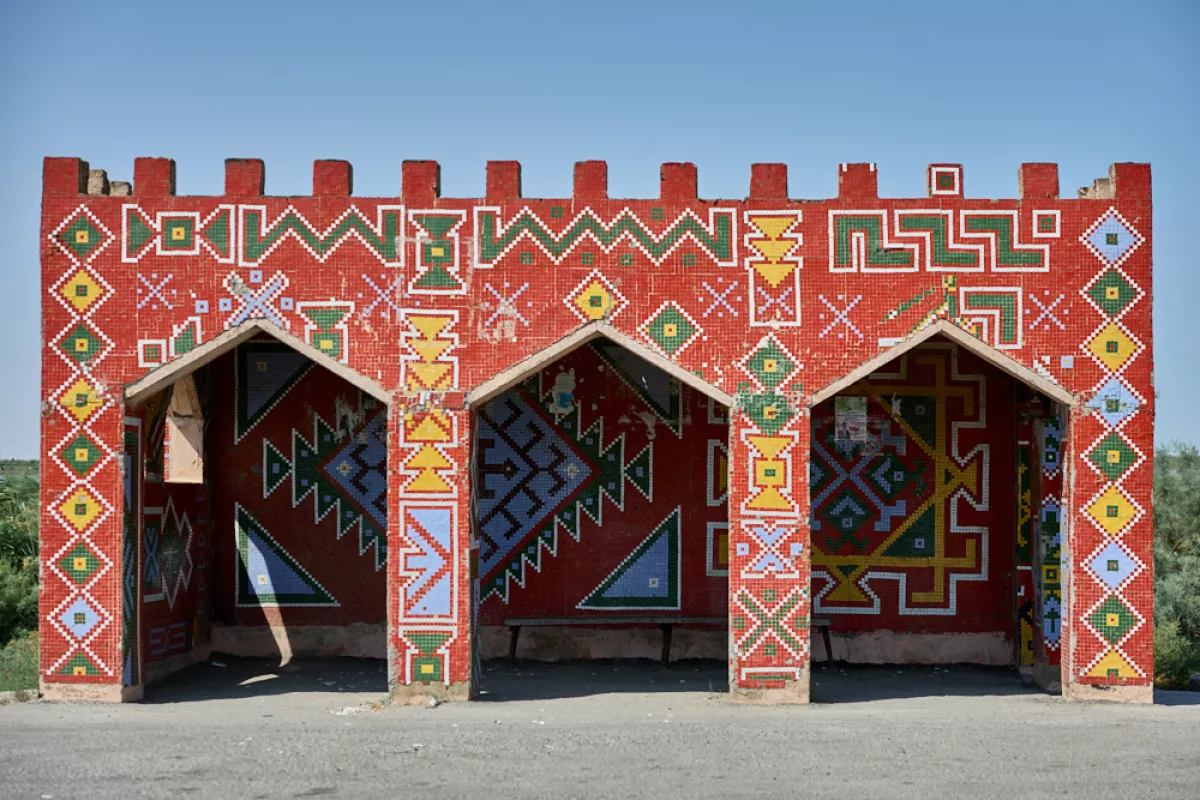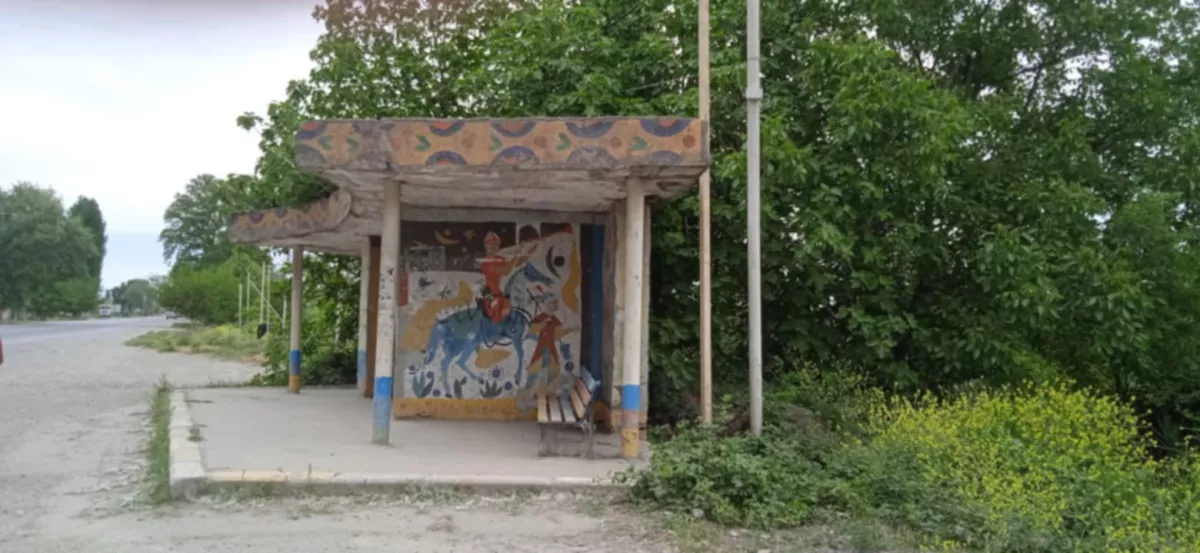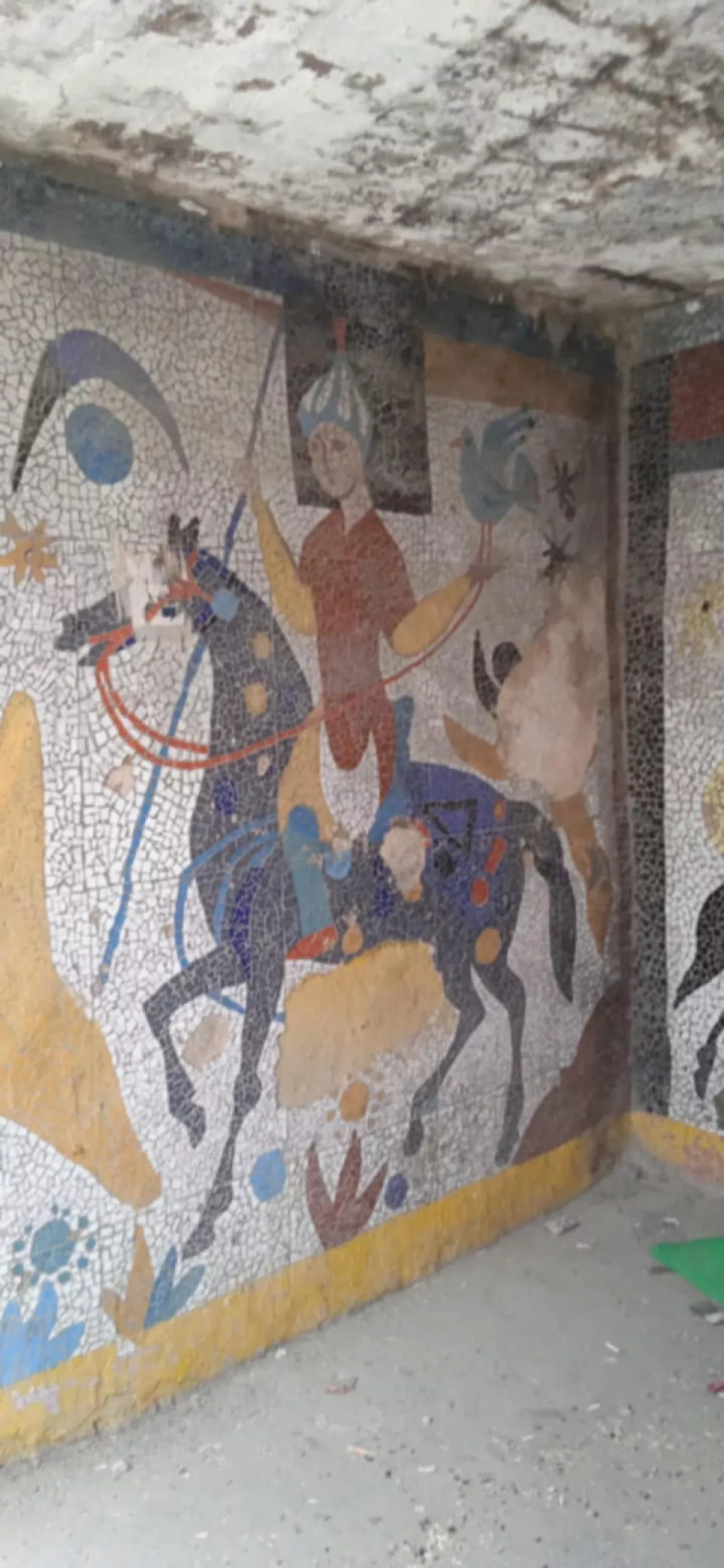Colourful stories: Mosaic panels at Azerbaijan’s bus stops Where history and modernity intertwine
Mosaic is one of the oldest decorative arts known to humanity since ancient times. From tiny pieces of stone, glass, and ceramic, artisans created vivid compositions to adorn temples, palaces, and public spaces. This art form served not only as decoration but also as a means of conveying knowledge, traditions, and the aesthetic ideals of its era.

In the second half of the 20th century, mosaic art experienced a revival, becoming an integral part of the architectural landscape of Soviet cities. Panels on building facades, in interiors, at bus stops and metro stations became vibrant accents of urban aesthetics. These works depicted scenes from everyday life, achievements in science and technology, images of labour, nature, and cultural traditions. Artists sought to give each space a unique character, combining decorative expression with ideological meaning.
A particularly popular material in mosaic art was smalta—a coloured, opaque glass known for its durability and rich hues. Thanks to these qualities, artists were able to create intricate, multilayered compositions that retained their brightness and expressiveness for decades. Smalta gave mosaics a painterly quality comparable to mural art, along with resistance to the passage of time and environmental conditions.
In Azerbaijan, mosaic art has held a special place in the artistic culture, especially starting from the 1960s. Mosaic panels became an integral feature of the urban environment both in the capital and in the regions of the country. These works emphasized national characteristics, historical themes, and everyday realities, organically blending traditional elements with modern artistic techniques. Thanks to the talent, skill, and refined taste of Azerbaijani artists, mosaics gained high artistic value and became visual symbols of an entire era.
Today, such works are perceived not merely as architectural decorations but as significant artworks that have preserved the spirit of the time and the richness of Azerbaijan’s cultural heritage. They serve as reminders of a past in which art played an important role in shaping the visual identity of public spaces.

Mosaic played a special role in the design of public transport stops. These facilities were usually utilitarian in purpose, but thanks to mosaic panels, they transformed into expressive elements of the urban environment. Each stop acquired a unique appearance and became not just a functional point, but a part of the cultural landscape. They created a sense of comfort, aesthetic order, and artistic presence in everyday life.
Mosaic compositions often captured scenes from folk life—rituals, celebrations, national traditions, and images of people in traditional costumes. Ornaments inspired by carpet patterns were organically woven into the designs, adding depth and national colour. In certain regions, artists drew on themes connected to local specifics—depicting wheat, cotton, grapes, emphasising the importance of agriculture for the economy and the way of life of the population.
Some stops were decorated with mosaics combining pictorial and sculptural elements—reliefs and bas-reliefs. Such works enlivened the space, giving it additional volume, movement, and plastic expressiveness. Artists approached details with special care: carefully selecting the colour palette, constructing the composition, and developing the narrative, turning each stop into a true work of monumental art.

These mosaics served not only a decorative but also an emotional function—they uplifted spirits, shaped an environment conducive to visual harmony, and acted as reminders of cultural and social values. Today, they are regarded as monuments of architectural and artistic heritage, inspiring respect for the masters of the past and a sense of pride in national art.
The contemporary perception of mosaics in Azerbaijan goes far beyond mere decoration. They are an important part of the cultural code, a visual bearer of historical memory and spiritual values. Many mosaic panels are now preserved and restored, regarded as an inseparable part of the city’s identity and artistic space. Mosaic art continues to live on, connecting the past and the future, passing down artistic, historical, and symbolic meanings woven into the fabric of the city.
Vahid Shukurov, exclusively for Caliber.Az








